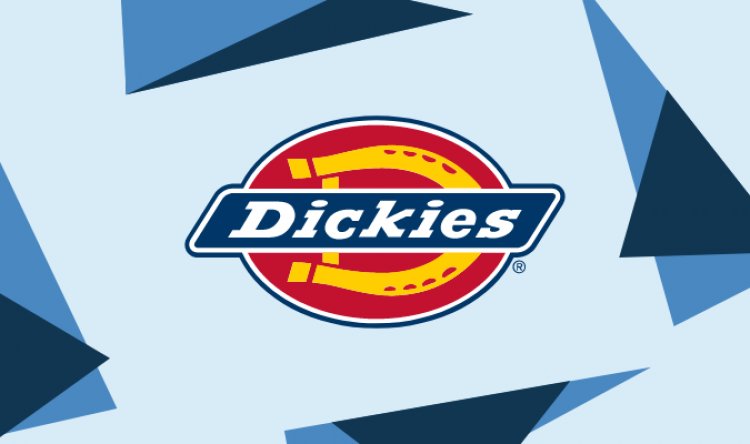How data is enabling Dickies to make better decisions, faster
… The post How data is enabling Dickies to make better decisions, faster first appeared on Blog.

Founded in 1922, Dickies is one of the oldest and most venerated brands in the clothing industry. It is known for its durable and comfortable workwear—and a style that resonates as much with pop culture icons as it does with auto mechanics.
I recently spoke with Calvin Anderson, Vice President of Global Digital Strategy at Dickies, to find out how data is helping the enduring company cement its status as the global leader in functional-yet-fashionable work clothes.
Calvin’s passion for—and understanding of—data stems from a relentless, hands-on approach to solving business problems. He joined Dickies less than two years ago, but as the following Q&A attests, he has quickly become the driving force behind Dickies’ digital transformation.
Q: What is Dickies’ history with business intelligence (BI) and using data to inform decisions?
A: Dickies turned 100 this year and was family-owned until it was acquired in 2017 by VF Corporation. Dickies’ culture has always had an incredible thirst for data insights, but the environment that hosted that data grew severely tangled over the years. This left us with outdated code, a slew of patches, and challenging documentation—the result of which was a lack of data trust, and an every-man-for-themselves environment with low synergy.
Q: What were some of the use cases for your data that you were considering as you began looking for a BI solution?
A: One of the most exciting places for data is around customer trends and behaviors. Because so much of Dickies’ business is wholesale, we had to bring in many of the e-commerce basics to power a modern, digital environment. This meant things like designing an environment that generates unique customer IDs, ensuring that the growing levels of data are governed appropriately, building out audience segments, and creating consumer journeys.
With this data, we learned so much about our consumers. We saw a surprising number of women buying men’s clothes for themselves, which has enabled us to relook at our women’s product offerings. Seasonality for product types, such as shorts or outerwear, came into focus. Additionally, we were able to put core consumer KPIs in front of the whole business in order to help commercial team members align and focus their efforts.
Q: How is Domo helping you utilize all that data?
A: Domo has cracked the code in delivering friendly data to non-experts. It’s so easy to find your way around the app. The drill capability is incredibly easy. While we’ve offered many internal trainings, the reality is most users just jump in and start playing with the data. We really don’t want analytics to feel like a chore. As a revenue owner, checking in on your stats needs to become a path of low resistance. That’s been the magic of Domo for us. The UX (user experience) is just so intuitive.
Q: What led you to pick Domo as a BI partner?
A: I always say that data discovery should start at the macro and waterfall into the micro. Domo has an incredible ability to show your top KPIs and then let you click right into them to see what’s affecting the observed trend.
The ability to go as deep as needed to find a problem, then screen-grab it, tag a colleague, and leave a comment is powerful. It becomes a great environment for collaboration.
Additionally, in today’s fast-moving environment, a mobile-first design is a must. We are in a business environment where we are constantly being asked to make more decisions—and better decisions—faster. People need their data on the go. No platform does a better job at mobile than Domo’s app.
Q: You just started with Domo a few months ago. What are your biggest successes with Domo so far?
A: As of now, our biggest success story is user adoption. Engagement is higher than it’s ever been. The in-app collaboration is at a level I’ve never seen before. Our business is embracing usage, aligning behind a single source of truth, and working to replace all ad-hoc reporting with automated Domo dashboards.
Q: What does the future of data look like at Dickies?
A: My objective is to have every piece of data in a single trusted environment that is efficient for the amateurs and democratic for those that want to self-serve. All verticals should be able to see and understand our business.
An example of this environment working might be a situation where great reviews and social media engagement draw sudden attention to a product. That product picks up momentum and begins rapidly selling in all channels. We would immediately see that said product is a more profitable product because the same data environment that tracks social and sales also shows profitability. We could then develop a plan to manage inventory, capitalize on consumer demand, and drive direct sales.
Data decisions like this should flow from vertical to vertical, just like an organism naturally responds to its environment. This can only happen if data is deep, wide, and accessible across the organization. It’s the full “circle of life.” In order to operate this way, our data must draw from everywhere, and touch everything.
The post How data is enabling Dickies to make better decisions, faster first appeared on Blog.






















